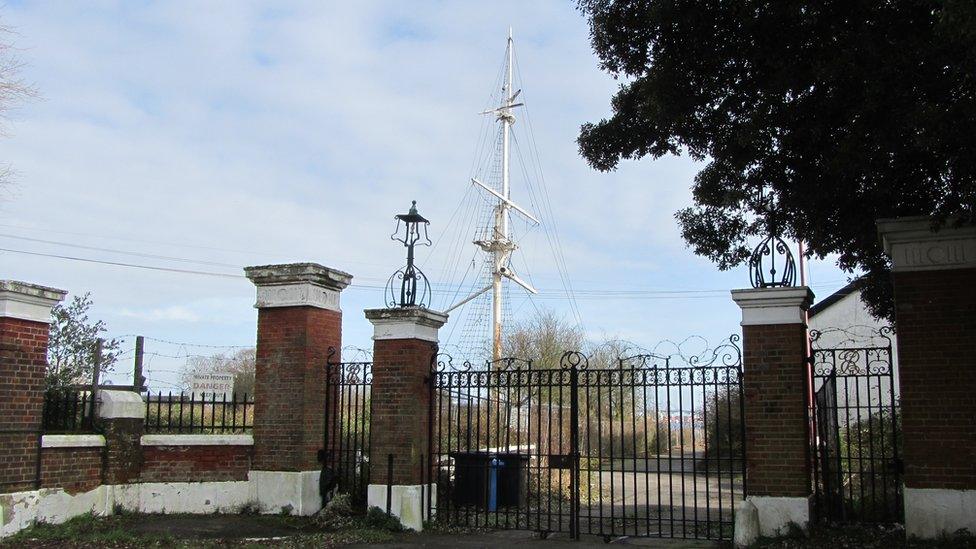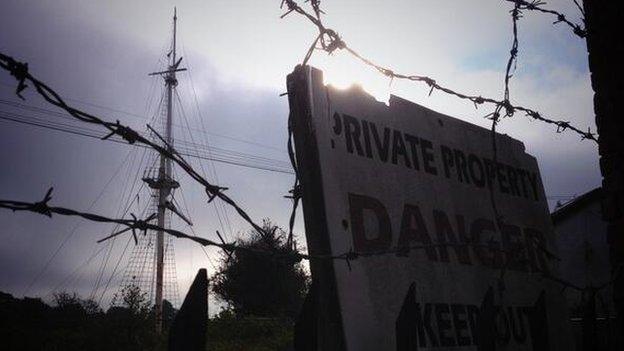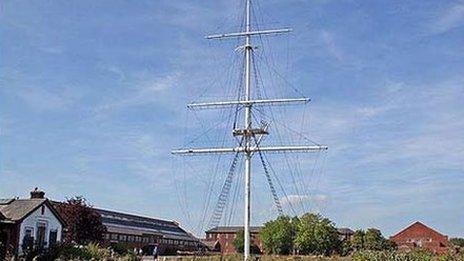HMS Ganges: 40th anniversary of Royal Navy leaving training base
- Published

The derelict base as it is today - with the training mast visible on the former parade ground at the site at the end of the Shotley Peninsula
For decades, HMS Ganges in Suffolk was the first taste of naval life for generations of Royal Navy recruits. But 40 years ago, on 6 June 1976, it was decided that the training base would close.
In the years since its future has been the subject of much debate and remains unclear even now.

Recruits are shown how to stow a hammock - date of photograph unknown
HMS Ganges was the name given to several Royal Navy ships since from 1779, but in 1905 it was chosen as title for a new training base at Shotley Gate, near Ipswich where about 500 boy recruits were stationed.
In 1907, its famous 143ft (44m)-high training mast was erected on the parade ground for recruits to climb.
Recruit numbers rose to 2,000 during World War Two, but dropped to about 1,000 by the late 1960s and declined further until the base closed for good in June 1976.

A photograph of the base taken sometime in the 1950s (left), with recruits on the mast in 1937
In 1967, the then Blue Peter presenter John Noakes made his ascent of the mast, external for the BBC's programme in an attempt to emulate the "button boy" who would reach the very top of the mast and stand hands-free with only a supporting bar between his legs.

John Noakes gets ready for his 1967 ascent of the mast

John Noakes attempts to shin up the final 15ft of the mast with no rigging to hold on to, but he had to give up
More footage shows the button boy standing, external, hands-free, on the button, with a support bar between his legs.

One of the accommodation blocks at HMS Ganges, which had 2,000 recruits at its peak during World War Two

The base was used as a police training centre until 2001 but has been derelict since then
Plans for a development of 285 homes by Galliard Homes were approved by Babergh District Council in 2013.
The plans also include a hotel, a 60 bed nursing home, retail and commercial units and a commitment to restore the listed ceremonial mast, which has fallen into disrepair.
In 2009, the Ipswich Maritime Trust estimated the cost of the mast restoration would be at least £400,000.
Woolverstone Parish Council lodged an application for the judicial review on the grounds that traffic flows on the B1456 had not been fully taken into consideration.
The hearing is due to take place next month.
Mark Murphy is broadcasting live from the site on Monday morning. You can listen back here.
- Published27 November 2013

- Published13 September 2013
